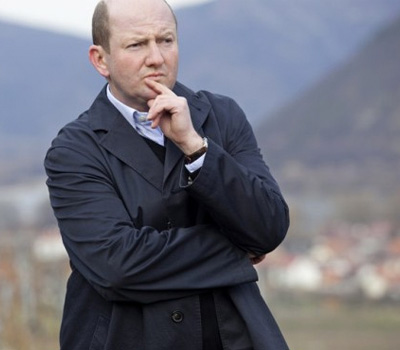

This is not to say that one shouldn’t think about wine. For me, the intellectual element of wine is indispensable to my enjoyment of it. Without this element, and particularly without the concept of terroir, wine becomes merely a beverage derived from fruit. All good wines combine elements of both intellectual and gustatory pleasure: Wine is boring without the former, and without the latter, it’s pointless to drink. Why bother putting something in your mouth if it doesn’t taste good?
Wine criticism, however, heavily emphasizes the intellectual element. This can make it difficult to write about certain wines within the context of the 100-point scale. It’s not necessarily a problem with the scale itself, as the scale is a useful tool for a critic to convey information to a reader. But it’s worth examining what the scale measures. The 100-point scale does not measure deliciousness. Strictly speaking, it’s not even a measure of how much a critic personally likes a wine. A professional critic uses the scale to assess certain qualities of a wine—things such as complexity, finesse, harmony and length—and the rating indicates how well he or she thinks a particular wine measures up to what we as a culture regard as ideals. A wine that scores above 90 points is expected to have a certain level of complexity and refinement, but these things are ideally assessed independently of emotional or visceral response.
There are some wines, then, that don’t fare well in this context but that excel in the realm of everyday life. To my knowledge, no critic has ever given 100 points to a Muscadet, yet an uncomplicated, zesty Muscadet can be almost addictively compelling. Jo Landron’s Amphibolite is a classic example: While this entry-level wine doesn’t have the complexity, intensity or ageworthiness of Landron’s upper-tier Muscadets such as Le Fief du Breil or the Cuvée Hermine d’Or, it is utterly joyful to drink, especially alongside oysters or other briny fish and seafood. Personally, I derive more pleasure from this Muscadet than I do from many other, more highly rated wines.
Beaujolais is another category of wine that excels at delivering uncomplicated pleasure. While a few top wines from a small handful of the best producers are deservedly showered with accolades, such as Marcel Lapierre’s Morgon or Jean Foillard’s Côte du Py, other worthwhile wines in the appellation tend to slip by unnoticed. Perhaps it is because Beaujolais is so invitingly delicious that most people don’t treat it seriously: For example, Jean-Paul Brun makes his L’Ancien Vieilles Vignes with a great deal of care, including practicing natural viticulture and traditional fermentation with indigenous yeasts. But how can you be blamed for not concentrating on those details when the wine simply tastes so good? I might say the same for Pierre-Marie Chermette’s fragrant and lacy Fleurie Poncié, or Dominique Piron’s fresh, juicy Beaujolais-Villages, Les Vignes de Pierreux.
Some of these wines might score above 90 points when rated in a blind tasting, but many are likely to fall somewhere in the neighborhood of 87 or 88. An 88-point score, though, hardly has any sex appeal. The question then becomes: How do you draw attention to these wines? It’s often the consumer who gets criticized for chasing only those wines that score 90 points or higher, but perhaps we as critics need to find new ways to talk about those wines under 90 points that we think are particularly worth pursuing. It’s easy to write about grandiose wines, and it’s easy to appreciate them. Believe me, I enjoy drinking La Tâche as much as anyone. But Pichler’s idea of wines for living reminds us of the ample diversity of the wine world, and of those unheralded, unpretentious wines that are capable of offering so much pleasure.
This story was featured in W&S April 2010.
Author of the much-anticipated Champagne, an obsessively detailed guide to the region and its wines, he’s been a part-time resident of Champagne since 2006, where he reports for his site, champagneguide.net. A former tasting coordinator and critic for this magazine, he last wrote for W&S on sustainable farming in Champagne in our December 2016 issue.
This story appears in the print issue of April 2010.
Like what you read? Subscribe today.















